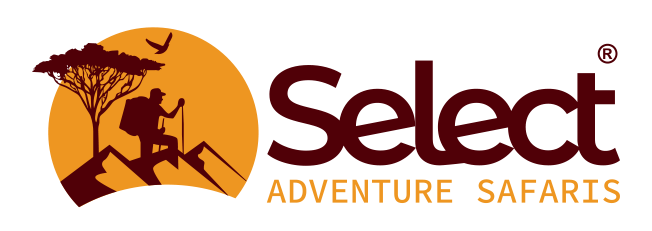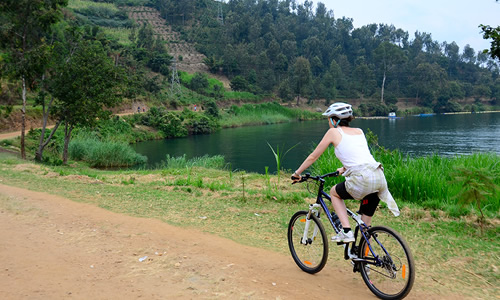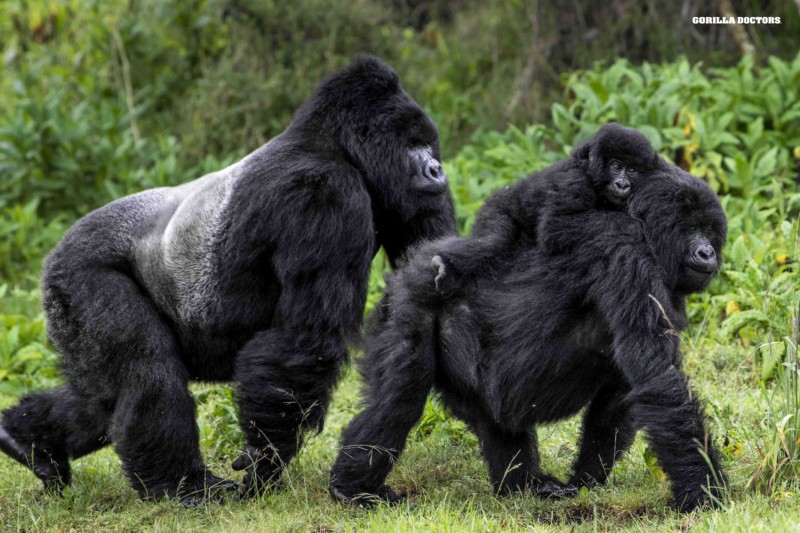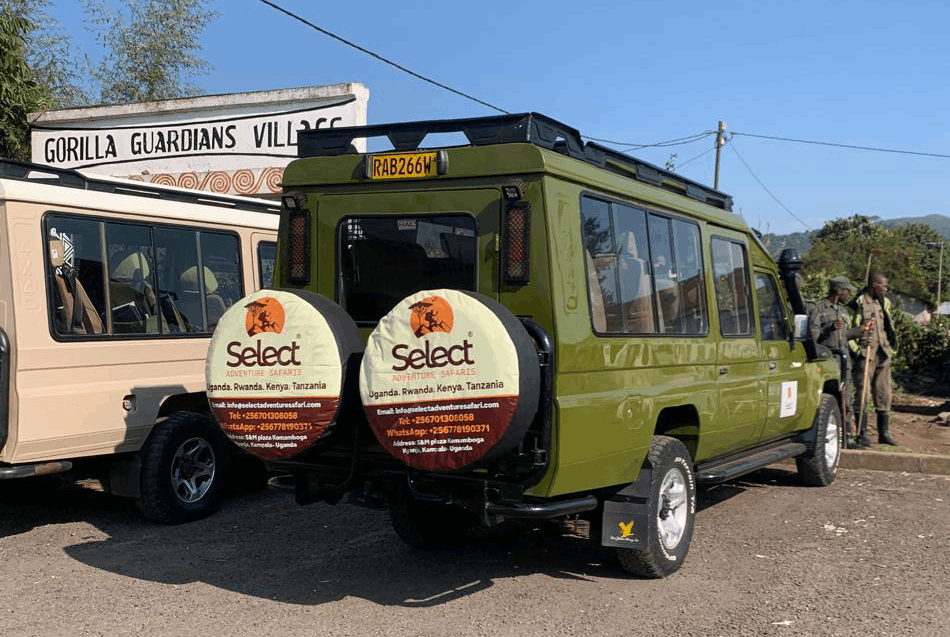Gorilla trekking and tanzania safari combined
Gorilla trekking and tanzania safari combined : Gorilla trekking and tanzania safari combined : Advice for Organizing a Tanzania Safari and Gorilla Trek Together .Through some of Tanzania’s renowned big game reserves in the Northern Circuit, like Serengeti National Park, and the famous primates destinations of Bwindi Impenetrable National Park or Mgahinga National Park in Uganda & Volcanoes National Park-Rwanda, a combined Gorilla Trekking and Tanzania safari is the best way to experience two of Africa’s most amazing wildlife experiences in one exciting safari.
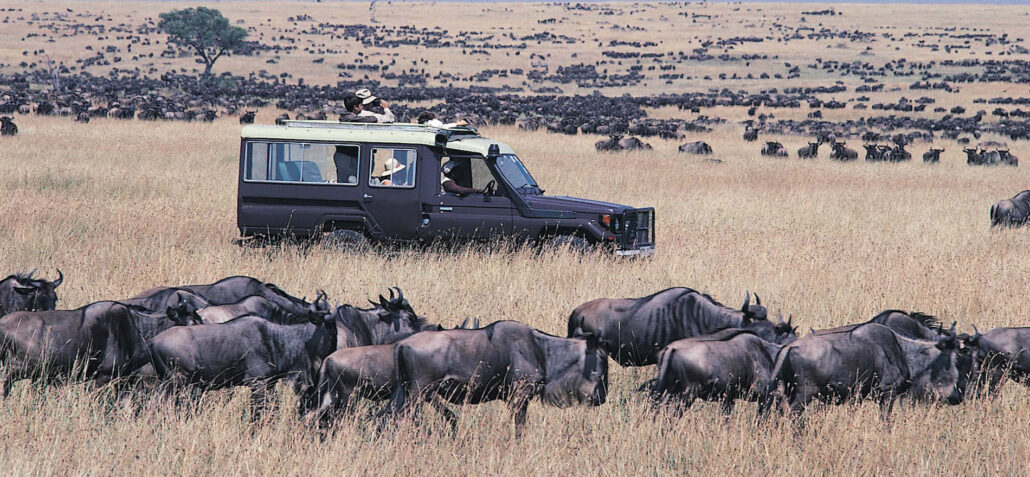
From choosing which places to visit to obtaining permits and the actual experience, organizing a combined gorilla trekking and African safari trip in Tanzania can be extremely difficult for many tourists. Here are some quick tips and guidelines to help you plan your trip.
Is It Better to Go Gorilla Trekking Before or After a Tanzanian Safari?
When paired with a Tanzanian safari, gorilla trekking in Rwanda or Uganda offers visitors the ultimate African safari experience, allowing them to see the endangered mountain gorillas and the Big Five Animals in their native environments. Many tourists, however, struggle to choose between the two wildlife experiences they should begin with during their vacation. Those who opt for Gorilla Trekking initially express concern that they may become ill or injured while trekking the gorillas, which could interfere with their primary activity, the safari, while those who opt for the Tanzania Safari initially worry that they will be too tired at the end of the safari to fully enjoy the Gorilla Trekking experience.
Based on our experience, we believe that it makes little difference if a gorilla trek is done at the beginning or the conclusion of a safari. Depending on the best aircraft connections, tourists can combine a Tanzanian safari with a gorilla trek in Rwanda or Uganda.
We don’t find safaris to be as exhausting as some travelers believe because visitors are typically seated in 4X4 safari Jeeps with frequent breaks and early bedtimes as lodges and camps settle in the early evenings. Additionally, gorilla trekking isn’t a particularly risky activity where one should expect to get hurt or ill because there are rules to follow when encountering the apes and tourists are always accompanied by armed rangers who help to clear the path in extremely dense jungles.
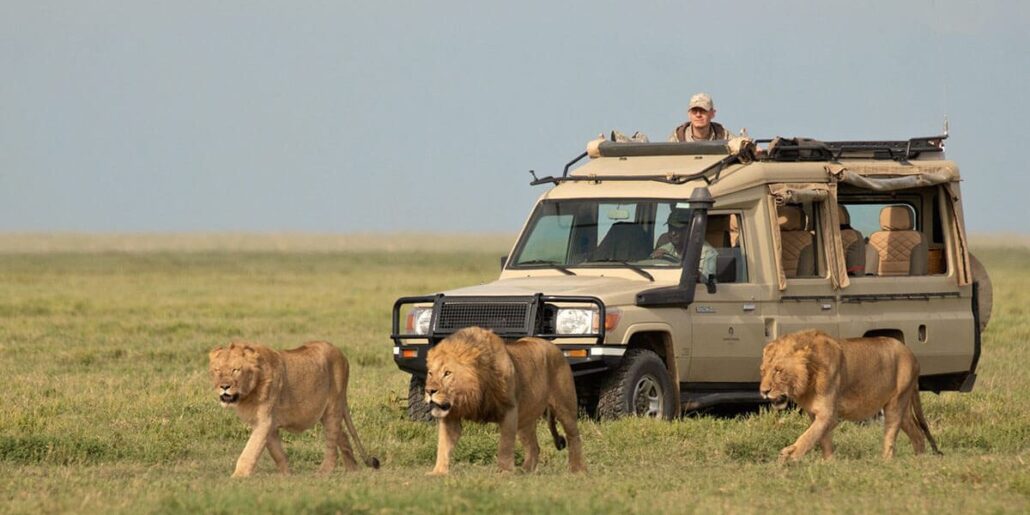
Safari game drives, on the other hand, involve seeing the animals from the comfort of a Safari Land Cruiser, Jeep, or Van with a pop-up roof, whereas gorilla treks entail hiking up and down hills through dense jungles for two to eight hours until you encounter the gorillas.
Advice for Organizing a Tanzania Safari and Gorilla Trek Together
Safari Scenes in Tanzania
How Can Gorilla Trekking in Rwanda or Uganda Be Combined with a Safari in Tanzania?
By flying directly into Kigali, Rwanda, or Entebbe, Uganda, and staying for three or four nights, travelers can combine an African safari in Tanzania with a Gorilla Trekking tour in Uganda or Rwanda. They can then fly to Kilimanjaro International Airport, where they will go on safari in the Northern Circuit before returning home, or they can fly directly into Kilimanjaro International Airport, go on safari game drives in the Northern Circuit, and then fly into Kigali or Entebbe for the Gorilla Trekking excursion. It should be noted that a 4-hour journey from Kigali to Bwindi allows one to trek the gorillas in Uganda without having to endure the lengthy 10-hour travel from Entebbe to Bwindi. Another alternative is to use a small aircraft to fly directly into Kigali or Entebbe from any spot in the Serengeti.
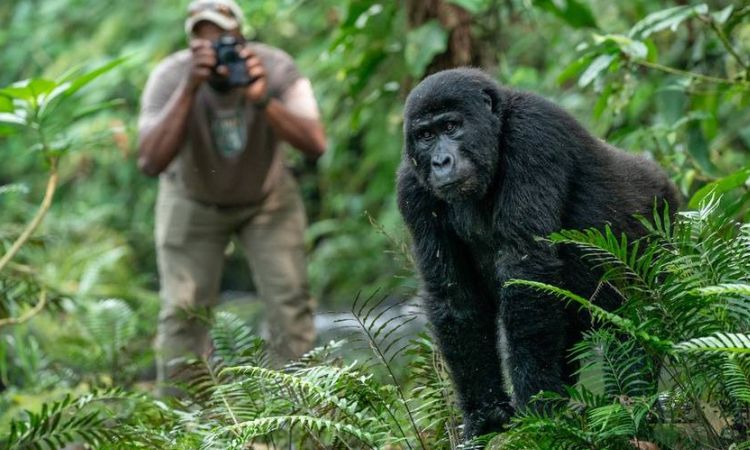
The ideal time to combine a Tanzania safari trip with gorilla trekking
Because all three countries have good climates with average temperatures of 25°C and chilly nights most of the time, customized tours that combine gorilla trekking in Rwanda or Uganda with a Tanzania safari are planned all year long. March, April, and May are the wettest months in Tanzania, Uganda, and Rwanda, with October and November seeing the least amount of precipitation.
Therefore, the optimal time to combine a Tanzania safari with gorilla trekking relies solely on what you hope to see or experience during your Tanzania safari, either before or after your gorilla trekking vacation in Rwanda or Uganda.
The best time to combine a gorilla trekking and Tanzania safari is throughout the year, as the Central and Western Serengeti have large resident animals, including predators, that are visible all year round. This is especially true if you are interested in just seeing wildlife, especially the big five animals, on your Tanzania portion of the safari after or before gorilla trekking. However, tourists should be aware that March, April, and May are the wettest months, with certain roads becoming impassable and slick. On the plus side, however, most upscale lodges and camps in Tanzania’s parks offer reduced rates to visitors during the wet months of March and April.
The ideal time to combine a Tanzania safari and gorilla trekking if you want to witness the wildebeest migration relies more on the stage of the great migration you want to watch, as detailed below:
Patterns and Routes of Monthly Wildebeest Migration
The paths taken by the big wildebeest migration throughout the year in both Masai Mara Game Reserve and Serengeti National Park are depicted in Wildebeest Migration Patterns.
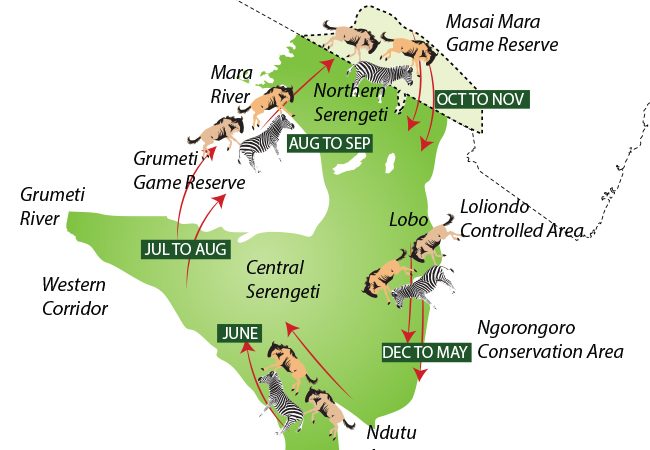
January, February, and March’s Great Wildebeest Migration
The calving season is in full swing by mid-February, with about 8,000 wildebeest born daily for about three weeks. The migration begins to move into the Ndutu region of the Ngorongoro Conservation Area in January because the short grass plains here are rich in nutritious grasses that give the herds the best conditions to raise their newborns. Thus, during this season, the vicinity of Lake Ndutu itself is the ideal location.
April and May’s Great Wildebeest Migration
The earliest indications of migration often appear in April, when hundreds of thousands of wildebeest start their grueling trek over the western plains before heading north.
As they pass through the Ndoha and Dutwa plains next to the Mbalagweti River, the herds may start to gather close to the Mbalagweti and Grumeti Rivers in anticipation of the crossing, which might be a hazardous situation for the animals. Both the central and western Serengeti offer an abundance of wildlife watching chances throughout these months.
June and July’s Great Wildebeest Migration
Around this time, the dry season begins with high concentrations of wildebeest in the Western Serengeti and on the southern banks of the Grumeti River. The rutting season typically begins in June, and you can expect to witness intense fighting between competitive males as they compete for the attention of females. One of the most thrilling aspects of the Great Migration is the crocodile-infested river that each migrating animal must traverse.
This river crossing is a unique and thrilling animal experience on Earth. In early July, hundreds of thousands of wildebeest and zebra continue to migrate north along the park’s western perimeter toward an even more dangerous barrier: the Mara River in the northern Serengeti. Although the exact date depends on the amount of rain, the Mara River Crossings typically begin in late July. Therefore, the best time to combine gorilla trekking with a Tanzania safari is from June to early July if you want to witness the Great Migration Grumeti River Crossing.
September, October, August, and Late July: The Great Wildebeest Migration
As of the beginning of August, the migrating herds have faced the difficulty of traversing the Mara River and are dispersed over the northern region of the Masai Mara Reserve, with a significant number still residing in the northern Serengeti National Park. Note that there isn’t just one crossing. Some locations have a large number of animals moving continuously for hours, while others have only a few individuals. Therefore, the optimum time to combine gorilla trekking with a Tanzania safari is from late July to early October if you want to witness the Great Migration Mara River Crossing.
The Great Migration of Wildebeests between November and December
The wildebeest migrate from Kenya into the eastern Serengeti past the Namiri Plains toward the end of October or the beginning of November. The cycle repeats as the calving season begins again in December, with the wildebeest herds dispersed throughout the eastern and southern regions. The best months to sight the animals in the Central and Eastern Serengeti are November and December.
Due to the abundance of resident wildlife, including predators, visitors can visit the Central Serengeti (the Seronera Area) throughout the year.
Advice for Organizing a Tanzania Safari and Gorilla Trek Together
Map Illustrating the Great Wildebeest Migration’s Movement
What More Can You Include in Your Safari and Gorilla Trek Combination?
Travelers can add activities like chimpanzee tracking in Kibale or Nyungwe Parks, golden monkey tracking, cultural experiences, or even a boat excursion on Lake Bunyonyi or in Akagera National Park after a safari and gorilla trekking tour in Tanzania and Rwanda. You might also choose to stay close to Lake Kivu, Lake Victoria, or Zanzibar’s beaches. If they have adequate time, visitors can go on more safari game drives in Akagera National Park and other savannah national parks in Uganda.
Can a road trip be taken from Tanzania to Rwanda or Uganda and back again?
Indeed, a road trip between Tanzania and Rwanda is feasible via the Rusumo or Mutukula borders, respectively. Mwanza City and Bukoba Town provide access to these border points from Arusha or the Western Serengeti. However, the trip is lengthy and could take up to two days.
In Rwanda and Uganda, where can one go gorilla trekking?
Gorilla trekking is possible throughout the year in Rwanda at Volcanoes National Park, which is situated in the country’s far northwest and is home to endangered mountain gorillas in its rich montane vegetation of bamboo forests and open grasslands. In Uganda, gorilla trekking is possible at Bwindi Impenetrable National Park and Mgahinga National Park in South Western Uganda, which are 10 hours from Kampala and 4 hours from Kigali. The trekking season runs from June through October, with the dry months of July, August, September, and August being the most common destinations.
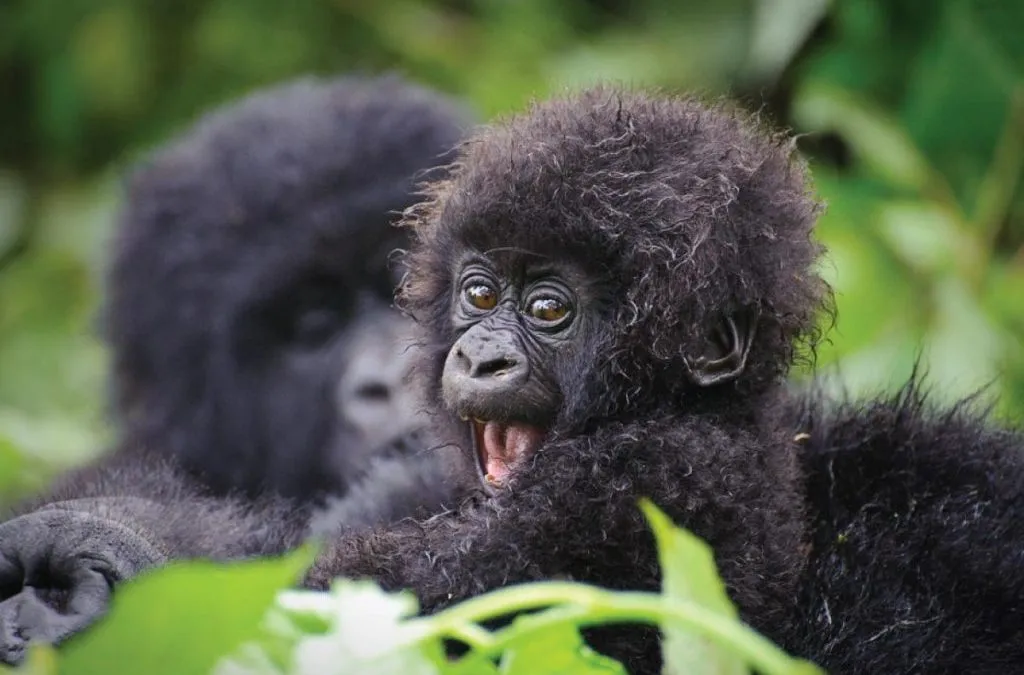
In Uganda and Rwanda, gorilla permits must be reserved or acquired at least two years in advance, in contrast to safari activity costs, which can be paid for on-the-spot. In Rwanda, the cost of a gorilla permit is $1500 for foreign nonresidents, $500 for foreign residents, and $200 for East African citizens. In Uganda, the cost is 800 for foreign nonresidents, 700 for foreign residents, and 300,000 Ugandan shillings for East African citizens.
Before or after a Tanzania safari experience, is it feasible to complete double gorilla trekking in both Rwanda and Uganda in a single trip?
Yes, tourists can go on a gorilla trek in both Rwanda and Uganda in a single trip, either before or after a safari in Tanzania. This can be accomplished by flying straight into Kigali International Airport either before or after a safari in Tanzania, staying on tour for at least 4–6 days to undertake gorilla trekking in the Volcanoes and Bwindi National Parks, and then departing via the Katuna and Chanika borders.
As an alternative, visitors can fly straight into Entebbe International Airport either before or after a safari in Tanzania, then go on to Uganda for adventure activities like game park safaris and chimpanzee trekking before concluding with gorilla trekking in Rwanda and Uganda before departing from Kigali International Airport Chanika Border. Learn more about trekking with double gorillas in Rwanda and Uganda.
